Introduction
It wouldn't be a Computex without at least one factory tour, and GIGABYTE was kind enough to offer us a tour of their Nan Ping factory out in Taipei.
This is only one of the many factories that GIGABYTE has around Asia, but this is the heart of GIGABYTE - it is where all the new research and development happens, along with production of the new boards that come out (all the new P45 boards are coming from this factory). Motherboards based on the lower cost chipsets like 945G come from China to reduce costs even further.
Entering the foyer of the factory looks just like any other office complex out in Taiwan, however, it's up on the upper levels that the magic happens; the lower level is for office meetings.
Before we started out tour we were taken to the ninth flow where a slide show presentation was shown to us which explains most of the process that goes into making a motherboard including the actual R&D, construction, troubleshooting and quality control.
Let's begin this tour, shall we?
Starting the Tour
First off we started at the solder paste applicator which is a machine that applies a layer of solder paste onto the PCB for the SMT machine to attach the components to. How it works is simple - the PCB is placed on the machine, a style of silk screen brush goes over the top and bottom of the board and rubs a layer of paste on the board. Take a look at the video below.
This is a tub of actual solder paste that is used - it remains in gelatine form. Thanks to the RoHS standards, the solder paste along with all other solder used has no lead in it anymore.
Next on the production line is the SMT machine, which I must admit was the most impressive unit of them all. This machine applies the extremely small resistors and transistors to the board at the rate of 20 parts per second! That's right - it can put 20 transistors and resistors on the PCB in 1 second, each board lasts around 5-6 seconds even for the biggest boards with hundreds of resistors. Simply amazing - see the video below for a look at the machine in action!
This is how the board looks after it comes out of the SMT machine. This now has all the IC's, transistors and resistors attached to the board which now allows it move on to the other sections of the factory.
Tour Moves On
The Tour Moves On
After the boards are done with the SMT, they are then visually inspected by manual labour to make sure all the components have been installed and placed correctly, making sure nothing has warped or been placed out of order. If the board passes its check, it's moved onto the next section. If it needs further work it's sent off to other manual workers who hand solder the motherboards (if possible) or throw it in the trash, if it is has been ruined.
While we were looking at the boards, behind us some workers were doing some quality checks on some nVidia Graphics cards based on 9600GT cores. It is very impressive to see just how much quality goes into the products while keeping the line going.
We took a detour from the factory to look at a couple of the other rooms the main floor has. First off one of the many storage reel rooms which have many racks contains resistors, IC's and various other components that the SMT uses. They are loaded like a gun into the SMT and from there it does its job.
Our next stop was the Automated Storage System or ASS. This is a set of cranes and forklifts that stretch from the seventh floor right down to the ground floor. This allows them to get anything from the top to the bottom easy as well as store the shipments that are ready to go within the cages, making shipping tasks a piece of cake.
Back to the Floor
This is another of the rather impressive machines called the Automated Inspection System or AIS. This allows the board to pass into a special machine that check the board over for defects, cracks in the PCB or other problems that would affect the board that the human eye couldn't pick up.
After the boards have done their pass through the AIS its time to start putting on the little bits that make the boards like sockets and connectors. The board we were seeing made was the new EP45-DQ6 which is GIGABYTE's high-end P45 mobo.
Here we see the line of people installing components. Each person puts either one or two parts on, as you can see there are quite a few people there so that's lot of connectors to go on the board.
There are the components ready to be installed, where we have DDR2 memory slots, PCI Express x16 slots, audio connectors and USB/RJ45 towers.
Show Must Go On
The Show Must Go On
This is what the board looks like with all the slots and header towers installed to the board going up the ramp into the wave solder machine.
The wave solder attaches all the parts like the I/O ports, peripheral slots, pin headers and so on by coating the bottom pins that stick down with solder. The machine keeps the solder in a liquid state and brushes them over the pin headers sticking though the board right on the PVB level so a good contact is made, preventing the slot from coming back out.
After the boards have passed the wave solder machine and have cooled down they are packed into special containers and taken to the next level. This is where the boards are then actually tested.
They get memory, CPU, VGA and a HDD installed and are booted into Windows. Drivers are checked, sound system is checked as well as any other components that the boards has like Firewire, LAN and such. If they pass stability tests they are then sent down to the packing room.
In the packing room there is an Automatic Processing Machine that takes the cardboard boxes and folds them into the retail boxes we know along with manual packing. The manual side of things is placing the board in the box, the accessories, manual and CD's. Funny how these guys and gals can get the stuff in there so neat, yet when I have to pack a board back up to return, I can never get all the stuff in there as neat as they can!
The last step is to place the finished boxes into larger shipping boxes and have them sealed; this is a pallet of boards ready to be put into storage for shipping.
Final Thoughts
Its one thing to get your board and install it to your system, but you forget what it actually takes to make some of these components, what has to happen to make all the simple magic we take for granted happen.
To some its more a matter "I don't care how it is done, just get me my board or GPU or memory...", but for others who like me, are curious on how things work, how they come to be, I hope this has been an informative tour.
I would like to thank GIGABYTE for their invitation and allowing us to take photos and videos of some of their machines in operation, as well as the guides who did a wonderful job showing me around and answering all my questions.
Until next Computex, we hope you enjoyed the tour!

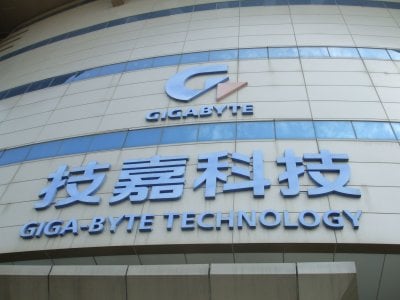
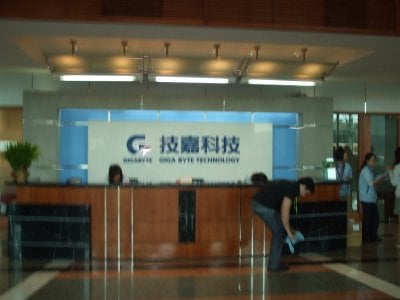
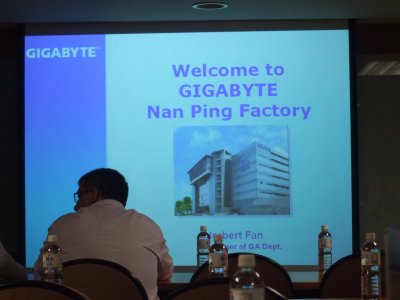
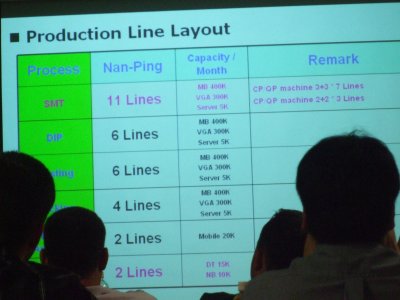
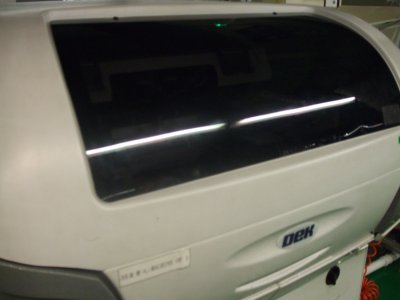
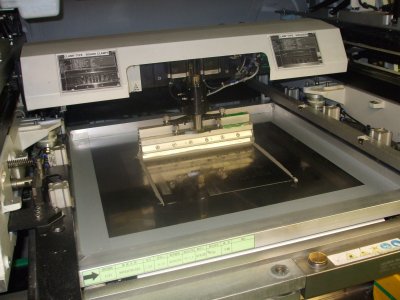
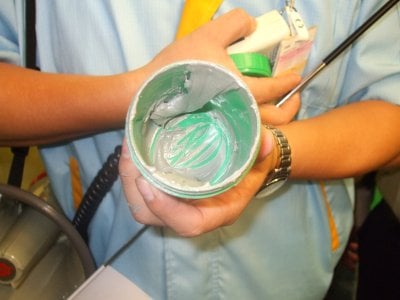
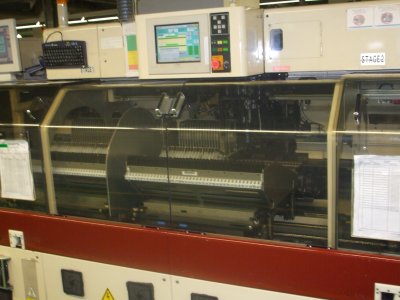
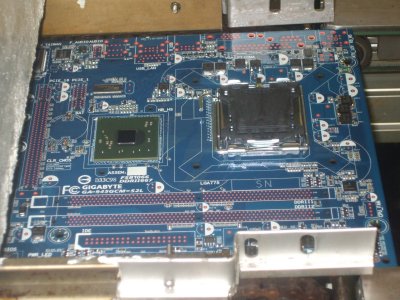
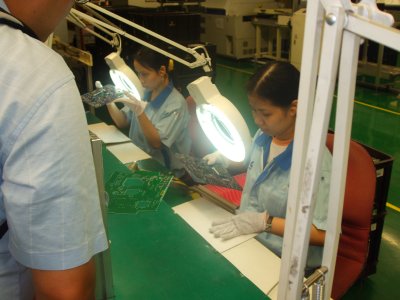
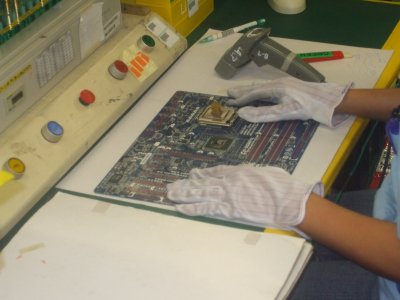
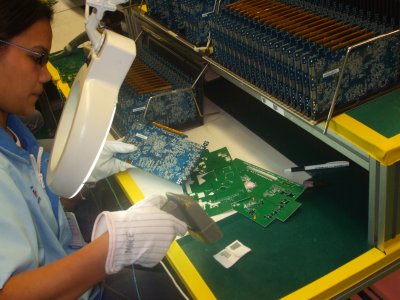
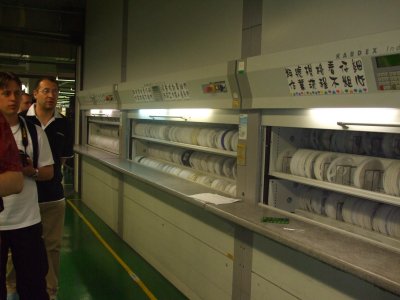
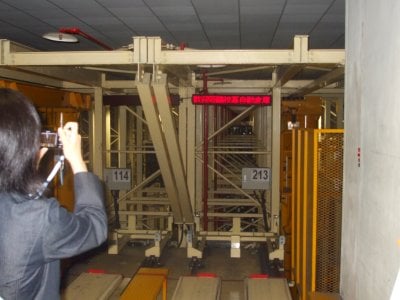
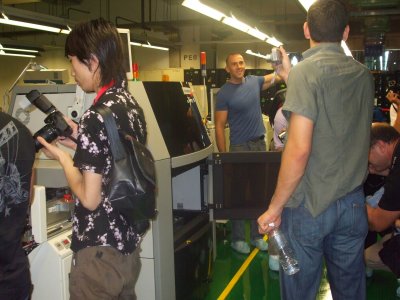
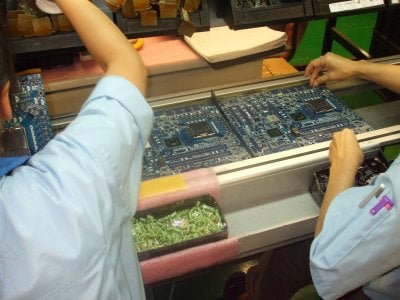
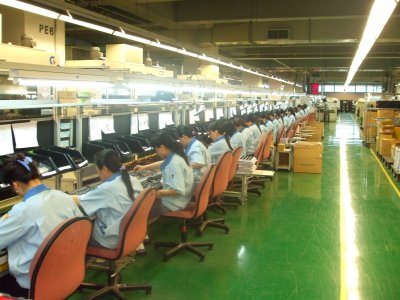
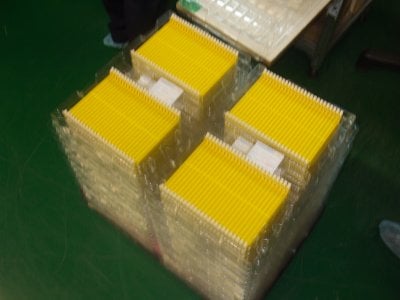

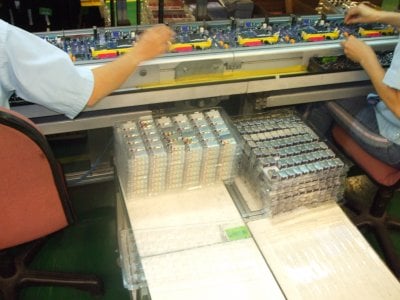
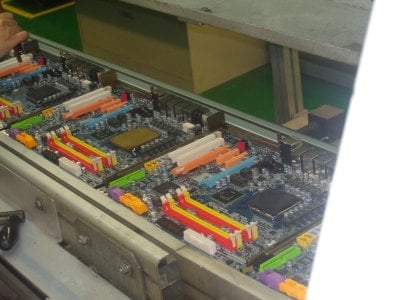
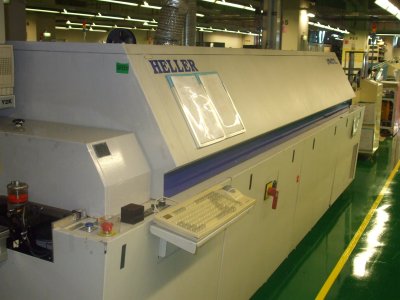
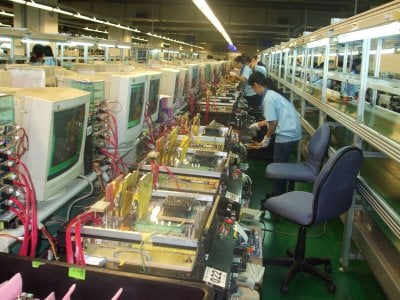
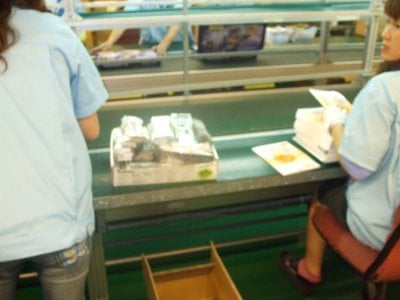
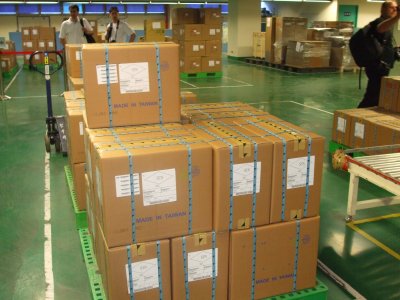
 United
States: Find other tech and computer products like this
over at
United
States: Find other tech and computer products like this
over at  United
Kingdom: Find other tech and computer products like this
over at
United
Kingdom: Find other tech and computer products like this
over at  Australia:
Find other tech and computer products like this over at
Australia:
Find other tech and computer products like this over at  Canada:
Find other tech and computer products like this over at
Canada:
Find other tech and computer products like this over at  Deutschland:
Finde andere Technik- und Computerprodukte wie dieses auf
Deutschland:
Finde andere Technik- und Computerprodukte wie dieses auf